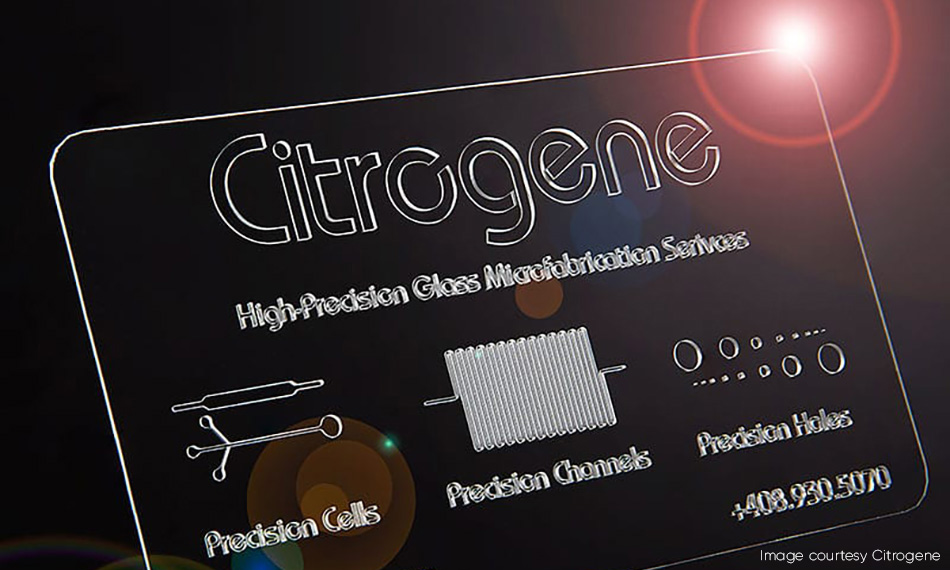CUSTOMER SUCCESS STORY
Citrogene
Precision Glass Cutting is a Snap with HyperRapid USP Lasers
The Challenge
Precision machined glass is incorporated into a wide variety of technologically sophisticated products, including medical devices, life sciences instrumentation, semiconductor tools, and consumer electronics. That’s because glass has a unique and particularly advantageous combination of physical properties. These include good mechanical strength, liquid and gas impermeability, optical transparency, low fluorescence, scratch resistance, thermally stability, chemical resistance, and biocompatibility. In many of these applications there is an increasing demand for glass components with ever smaller and more precise features – specifically complex, high aspect ratio microstructures, often including curved shapes. But, traditional glass machining methods, such as mechanical and waterjet cutting, and chemical etching can’t deliver what’s needed. While laser ablation can do it, it’s not cost-effective at marketing enabling speeds.
The Solution
The ultra-short pulse (USP) laser has emerged as the only economically viable means to achieve the kind of cuts and microstructures in glass and other transparent brittle materials that advanced designs now require. There are two distinct processes involved. The first is filamentation cutting – a process invented by Citrogene founder Dr. Abbas Hosseini. This utilizes a USP infrared (IR) laser to create a line of microscopic voids extending through the entire thickness of the glass. A series of these void “filaments” is produced in the desired cut pattern, and these weaken the glass, enabling it to be cleaning separated. High-speed cutting of curves and insets, without taper, can be performed with filamentation. The second process is microstructuring – creating wells, blind holes, channels, and other shapes, used in applications such as microfluidics. This is accomplished through high-speed cutting and ablation with a UV USP laser.
The Result
Citrogene uses a 100 W IR HyperRapid NX for filamentation cutting and through-hole cutting. (Laser hole cutting is followed by Citrogene’s own, proprietary post-processing). A 30 W UV HyperRapid NXT laser is utilized for microstructuring. “We chose the Coherent IR laser for several reasons,” notes Citrogene VP Mike Armas. “One key thing is that It supports ‘burst mode,’ which is critical to filamentation. But reliability was also essential to us; that laser is our workhorse, and we run it for 18 hours every day. For the UV laser, we really saw Coherent as the only option. No other laser maker delivers the level of UV reliability that Coherent achieves, and that’s vital to our operation. Also, service and support were just as important to us as laser specifications. Coherent is our partner; they keep our line running and never let us down.”
“Citrogene wouldn’t be here if we didn’t have our workhorse Coherent HyperRapid IR laser for precision glass cutting. And, our other laser – the HyperRapid UV – has enabled us to take on jobs for glass microstructuring we formerly couldn’t pursue at all."
— Mike Armas, Vice President, Sales and Marketing, Citrogene, Inc
